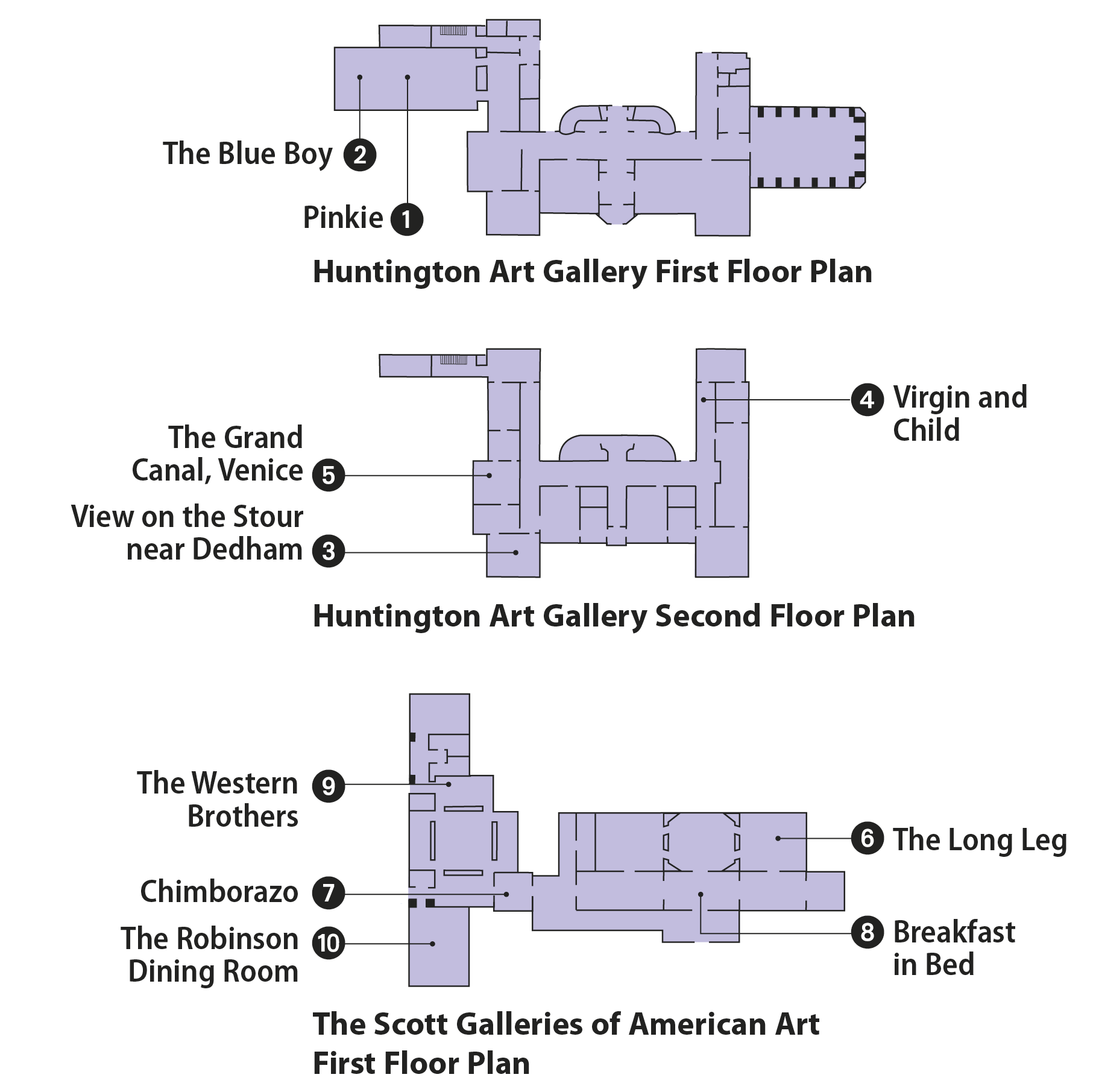TOP 10 HUNTINGTON ARTWORKS

1. Pinkie
Thomas Lawrence (1769–1830) painted Sarah Barrett Moulton, nicknamed “Pinkie,” aged 11, in a refreshingly direct and lively manner. She died soon after the painting was completed, possibly of consumption.

Pinkie, completed in 1794
2. The Blue Boy
Thomas Gainsborough (1727–88) is one of the most acclaimed British society portrait painters. This famous 1770 painting shows his friend Jonathan Buttall in costume.
3. View on the Stour near Dedham
Romantic landscape painter John Constable (1776–1837) adopted a lyrical approach to depicting nature. His emphasis on sky, light, and other intangible qualities influenced other artists, including the Impressionists.
4. Virgin and Child
A master of early Flemish painting, Rogier van der Weyden (c.1400–64) infused his works with emotional intensity, evident here in the Virgin’s face and hands.
5. The Grand Canal, Venice
This 1837 painting is a fine example of the translucency typical of the works of J. M. W. Turner (1775–1851). The tiny person in the lower right corner is Shylock from the play The Merchant of Venice.
6. The Long Leg
The solitude and anonymity of human existence is a recurring theme in the paintings of Edward Hopper (1882–1967), a leading 20th-century American Realist. Here, these sentiments of loneliness are expressed in a famous sailing scene.

The Long Leg, painted in c.1930
7. Chimborazo
A trip to Ecuador inspired this painting by 19th-century American landscape artist, Frederic Church (1826–1900). Church took creative license when compressing the mountains, desert, and jungle into a single image (1864).
8. Breakfast in Bed
Pennsylvania-born Mary Cassatt (1844–1926) moved to Paris in 1873, where she befriended Edgar Degas and fell under the spell of Impressionism. The subject of mother and child was a favorite.
9. The Western Brothers
John Singleton Copley (1738–1815) was born in Colonial Boston and moved to England just before 1776. This 1783 double portrait is characterized by flowing strokes and strong facial expressions.
10. The Robinson Dining Room
This re-created dining room exemplifies the innovative genius of the brothers Charles and Henry Greene. Designed between 1905 and 1907, it contains original furniture and an amazing chandelier.
HENRY HUNTINGTON’S BIG RED CARS
Henry E. Huntington made his vast fortune by marrying real-estate speculation with public transportation. The largest landowner in Southern California, he established the Pacific Electric Railway in 1901, primarily to get people out to the far-flung new suburbs he was developing. Soon Huntington’s fleet of interurban red trolleys – dubbed the “Big Red Cars” – became the world’s largest electric-transit system, linking communities across Southern California. By the time he sold most of his holdings to the Southern Pacific Railroad in 1910, the population of LA had tripled to around 310,000. “The last trolley” made its farewell voyage in 1961.

A model of the popular Big Red Car trolleys is one of the highlights of the Huntington collection.
TOP 10 BIG RED CARS FACTS AND STATS
1. Covered four counties
2. Linked 50 communities
3. First ride: 1901
4. Last ride: 1961
5. Track: 1,150 miles (1,850 km)
6. Fleet: 900 cars at peak
7. Passengers: 109 million in 1944 (peak year)
8. Fare: a penny a mile
9. Top speed: 40–50 mph (60–80 km/h)
10. Car length: 50 ft (15 m)
